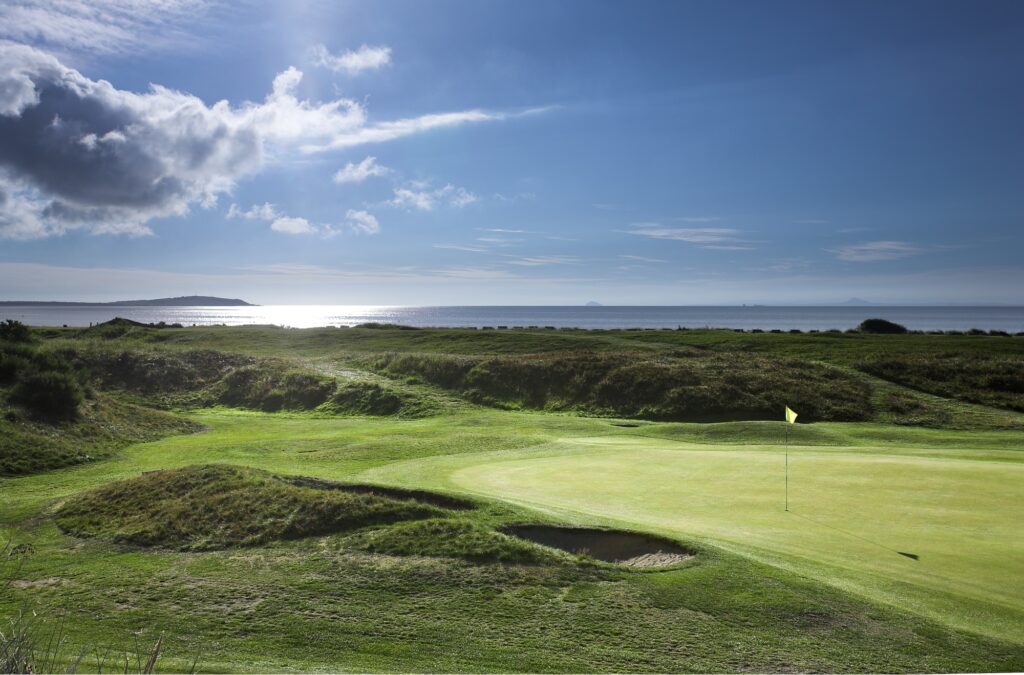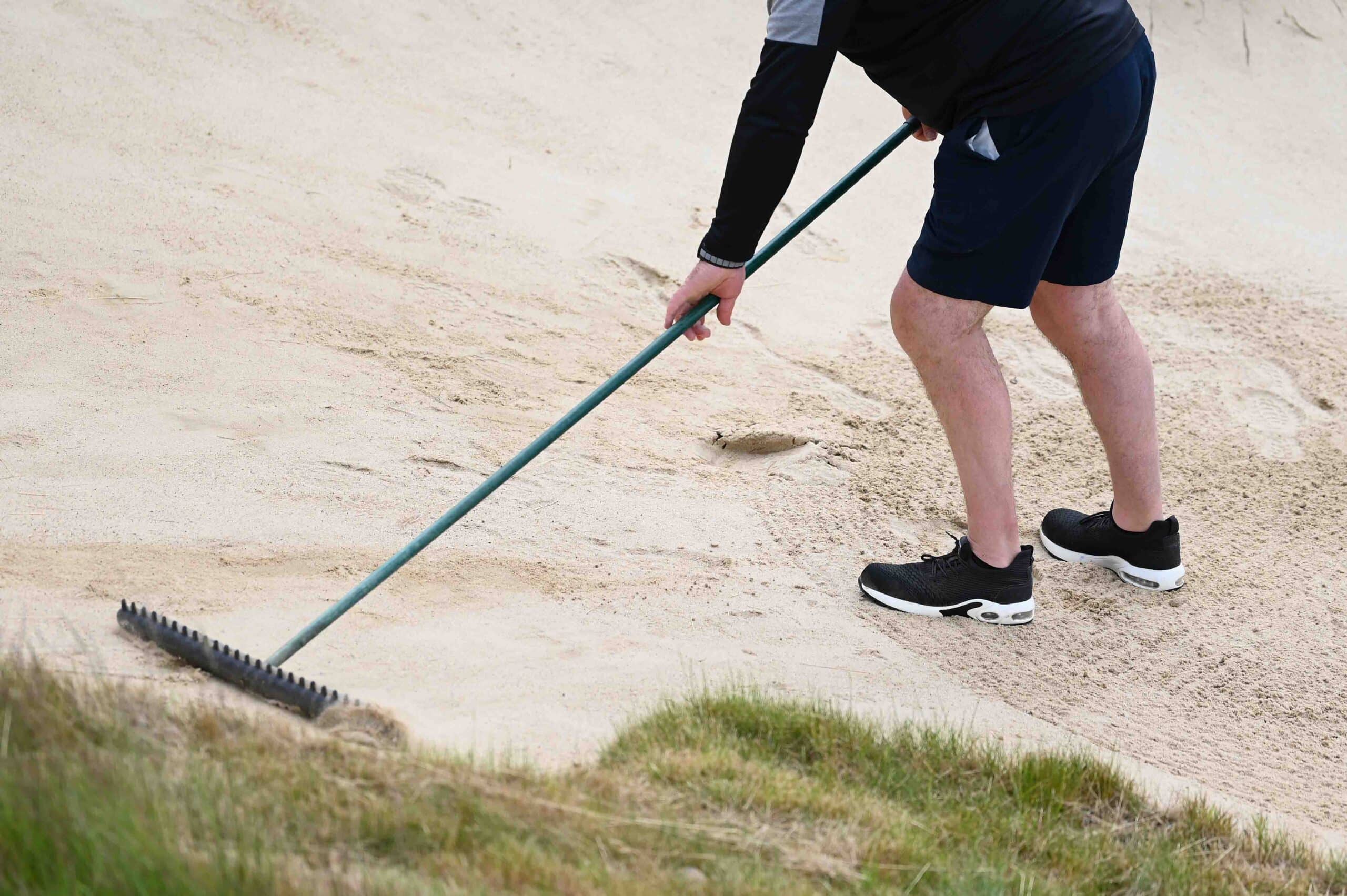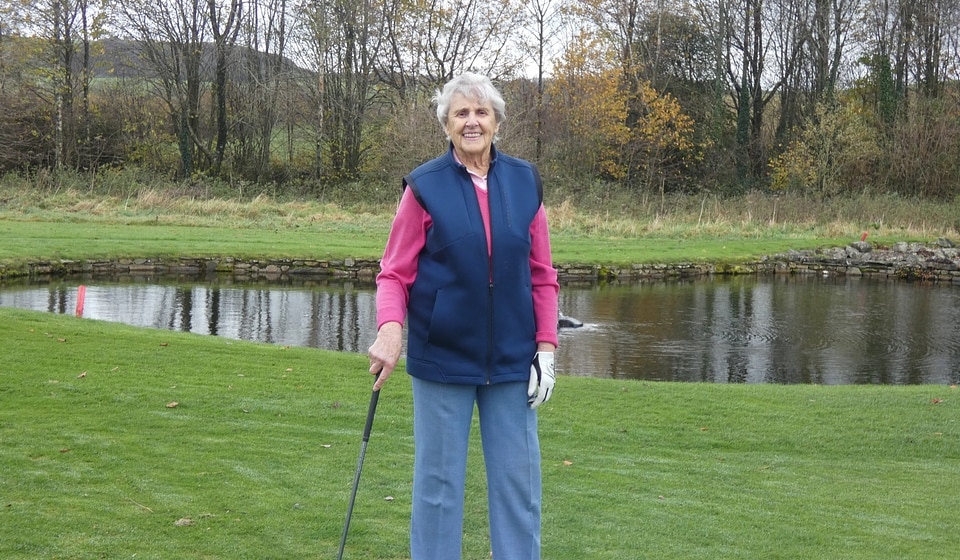
What is thatch on a putting green?
Whenever I think of thatch, the old Tudor roofs on cottages always seem to come to mind.
On a golf course, though, the word means something very different – and it’s important you come to terms with it if you’re going to understand why your greenkeeping team carry out some of the work they do on your golf course’s putting greens.
What is thatch on golf greens?
Thatch and organic matter sit between the green and the soil. Thatch is a layer of dead vegetation that is caused by dead leaf material.
This is produced naturally by the grass plant but we also contribute to it by leaving clippings on the surface. It’s often caused when grass is growing and is cut faster than it can decompose.
Thatch can be quite beneficial in small quantities, helping to provide protection against the constant barrage of foot traffic a green has to withstand, and also assisting with the retention of nutrients.
But when there is excessive thatch, serious surface problems can soon occur – both in the health of the grass plant and how it will affect playing conditions and turf quality on a green.
It can prevent water and nutrients from getting into the soil where they are needed and this weakens and damages the turf.
A putting green may not roll evenly and it can be vulnerable to more diseases and infestation from pests. The green may also be less resistant to the elements, so droughts and extreme cold can also have a big impact.
In the summer, you might see a green with lots of thatch start to yellow and die. But you can also think of it as a natural sponge too.
It can retain water very effectively and so too much thatch, particularly during rainy spells, can lead to waterlogging.
Your greenkeepers are always trying to walk a fine line and you might hear them talking about thatch levels on your greens at presentations.
So how do they go about removing thatch from golf greens? To keep it under control, they have a number of tools and cultural practices at their disposal. The one you’ll see most is aeration and that is particularly hollow tining, scarification, and verticutting.
Sand topdressing sees a layer of sand, or a mixture of it with other materials, spread across the green. The aim is to dilute the thatch and improve the quality of the soil and drainage.
All of these, along with general good turf management, can have an impact on thatch and promote a better grass plant and playing surface.
Has your club ever suffered from golf green thatch? How did your greenkeepers improve your golf greens? Let us know examples of best practice with a tweet.
Steve Carroll

A journalist for 25 years, Steve has been immersed in club golf for almost as long. A former club captain, he has passed the Level 3 Rules of Golf exam with distinction having attended the R&A's prestigious Tournament Administrators and Referees Seminar.
Steve has officiated at a host of high-profile tournaments, including Open Regional Qualifying, PGA Fourball Championship, English Men's Senior Amateur, and the North of England Amateur Championship. In 2023, he made his international debut as part of the team that refereed England vs Switzerland U16 girls.
A part of NCG's Top 100s panel, Steve has a particular love of links golf and is frantically trying to restore his single-figure handicap. He currently floats at around 11.
Steve plays at Close House, in Newcastle, and York GC, where he is a member of the club's matches and competitions committee and referees the annual 36-hole scratch York Rose Bowl.
Having studied history at Newcastle University, he became a journalist having passed his NTCJ exams at Darlington College of Technology.
What's in Steve's bag: TaylorMade Stealth 2 driver, 3-wood, and hybrids; TaylorMade Stealth 2 irons; TaylorMade Hi-Toe, Ping ChipR, Sik Putter.










